feudalism
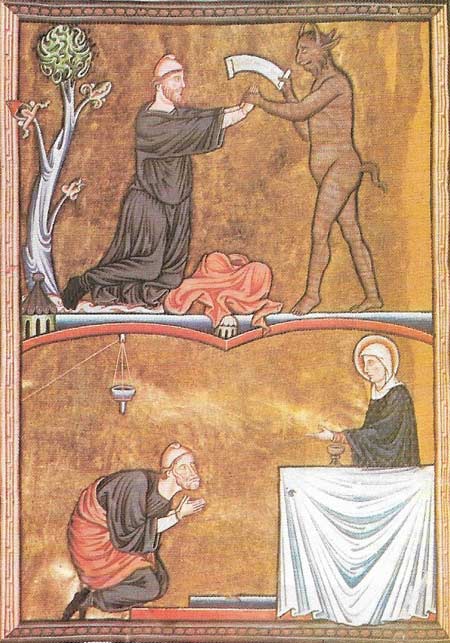
Figure 1. The ceremony of homage is shown in a metaphorical context in this 12th-century illustration of Theophilus paying homage to the Devil. The Devil carries a charter or written record. But the original ritual of homage was designed to register the contract in public on a memorable way without the need of documentary record. Because few men were literate in the earliest period of feudalism, it was essential to make legal contracts before witnesses whose memories could be relied on. Submission was represented by the lord taking the hands of his man between his own; afterwards they kissed to symbolise friendship.
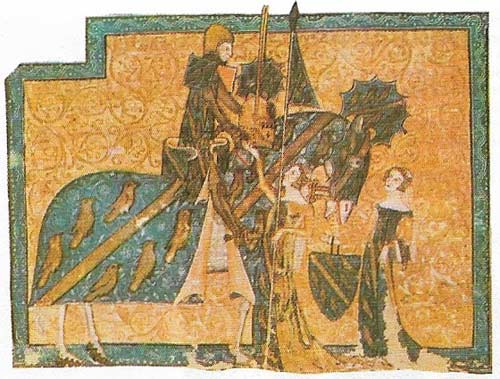
Figure 2. A 14th-century knight, Sir Geoffrey Luttrell, receives his helmet and lance (from the Luttrell Psalter). Knights were regarded as heros and their combats were invested with glamour. The impetus of their charge depended on the innovation of high stirrups; the high saddle also acted as a lever. The lance, intended to unseat opposing horsemen, could be used properly only with these aids. Few lords had many horses but evidence exists that careful breeding was increasing in number. An important stud at Corvey, Saxony, supplied the German imperial armies.
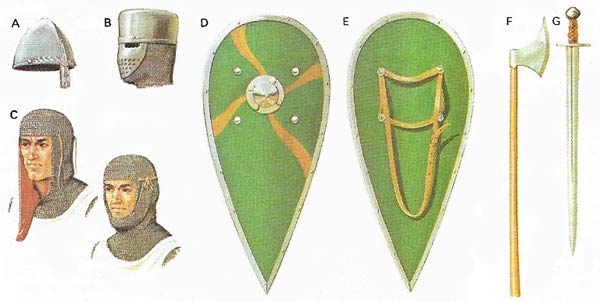
Figure 3. Functional armor was characteristic of Norman knights. As the sword (G) and axe (F) became longer, protection had to be increased with heavy shields (D, E) and the 10th-century helmet (A) gave way to a helmet with visor (B) and a fitted coif of chain mail (C).
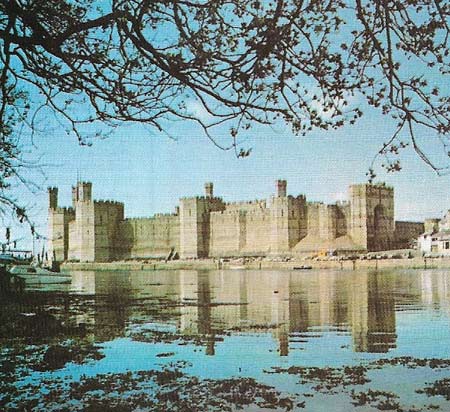
Figure 4. Caernarfon Castle, Wales (1283–1292), was one of the massive castles built by Edward I after he conquered Wales. By 1300 the primitive keep had developed into a fortified community large enough to house, and strong enough to protect, a provincial government behind technically innovative bastions.
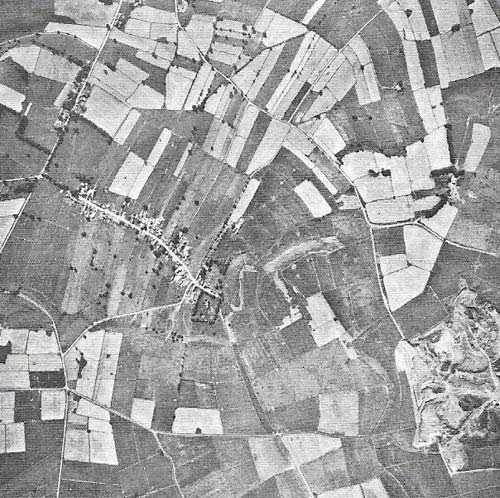
Figure 5. An English village (center, left), dating from feudal times, was created on uncultivated land at Chelmerton, Derbyshire. It shows a pattern implying a planned settlement, either through the enterprise of a Lord or simply peasant cooperation. Each house has a garden and narrow strip extending into the wasteland.
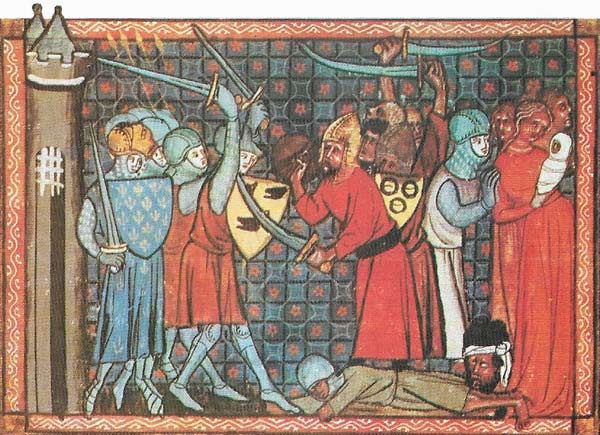
Figure 6. Chivalry is exemplified by St Louis IX, King of France (1226–1270), rescuing a Saracen lady and her child in battle. The feudal knight evolved a code of conduct transcending even his Christian allegiance, and chivalry was a central theme.

Figure 7. The knight, armed and mounted, was at the center of feudal society. Only an elite could afford the costly equipment.
In a civilization like Europe's in the early Middle Ages, with no civil service, police, or legal profession, the only stable institutions were the family group and especially — since wealth and power could result from it – the warrior band with its lord. The bond between lord and warriors was the basis of "feudal" society, in the Germany, England, and France of the 11th and 12th centuries. The ethic of the medieval warrior demanded fierce loyalty from the retainer and unstinting generosity from his lord.
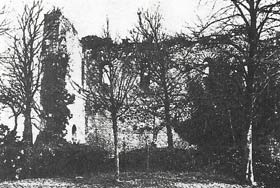 |
| Langeais Castle was one of 13 built by Fulk Nerra, Count of Anjou (987–1040); from them the House of Anjou, which later ruled England, began its formidable rise to power. In each, a castellated and garrison controlled roughly as much country as could be transversed in a day. Although fortified towns had existed before, the stone keep, which was the oldest type of castle, was an invention of the tenth century. Keeps, such as that at Langeais, stood on an artificial mound with a stockade. Internally they might have only one big room and a store, but they were focal points of feudal power and by 1100 had spread throughout Western Europe. |
Land tenure
The personal bond between the warrior and his lord, or later the tenant and the king, which was expressed in fealty, vassalage, and homage (increasing grades of obligation), became translated into the sphere of property relations. Absolute ownership of land was unknown in the Middle Ages; instead the king granted estates or fiefs, in return for definite services, often military, which were supported by oaths. The king's tenants-in-chief, too, granted out land to knights in return for oaths of loyalty to themselves. The ceremony of homage (Figure 1) did not necessarily imply either a permanent or an exclusive tie, and it was common for a knight to owe homage for an estate to several lords, or even to a social inferior. Feudal terminology was therefore simply a way of describing the complexities of land tenure: society was not in any hierarchical "feudal pyramid".
Nevertheless, the period from about 950 to 1250 is properly called "feudal" because of the dominant position of a warrior aristocracy in Western Europe and in Crusader Palestine. This aristocracy shared a common training and fighting technique, that of the mounted knight, and a common code of conduct, the ideal of "chivalry". Its basis was the technological superiority of mounted men over foot soldiers, which emerged about the time of Charlemagne. In antiquity the stirrup and the horseshoe were unknown; introduced from central Asia about 750, stirrups, in particular, had revolutionary consequences: they made it possible to charge effectively with a lance carrying the full impetus of a galloping horse without the rider being unhorsed on impact with his target (Figure 2). This placed great value on mounted warriors (Figure 7), but before about 950, horses were scarce; the Franks' relative wealth in them partly explains Charlemagne's successes.
Rise of the knights
There is evidence that the number of horses increased rapidly after 950 and in the next century mounted men everywhere decided the fortunes of war. Their numbers were small, their equipment expensive and their training long. But this increased their pride and prestige and by 1100 mounted warriors would symbolize their corporate spirit by the initiation ceremonies of knighthood.
Local society was thus dominated by the knightly classes. They served in various capacities: many, without a permanent master, sold their services as mercenaries to the highest bidder. Others, especially at the start of their careers, took service as the household knights of a great lord. Still others, particularly the Normans, were bound by the conditions of their tenure to fight at specified seasons; "knight-service" was the most important obligation for landowners.
The most formidable of knightly warlike skills was probably the charge in close formation, which was used devastatingly against the Turks in the First Crusade. But as professionals, knights also learnt defensive skills, the most spectacular of which was the development of the castle, from the simple 11th-century keep to the elaborate bastioned castles of the 1200s (Figure 4).
Chivalry and landowning
The knightly ideal of chivalry demanded that knights should fight to avenge the oppressed, to vindicate the honor of ladies – the theme of romantic love first appears in knightly circles in southern France in the 12th century – and to advance the Christian religion against the Muslim Saracens (Figure 6). The Templars and Hospitallers combined knightly prowess with monastic chastity in the defence of the Holy Land.
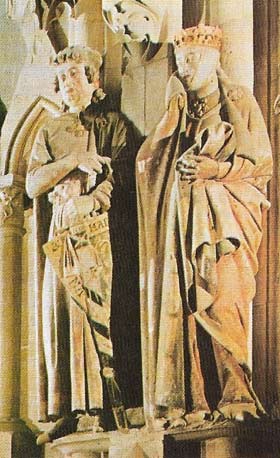 |
| Ekkhard and Uta, a 13th century Crusader and his lady sculpted in Naumburg Cathedral, represented the highest ideal of European nobility – the Christian warrior – toward the end of the feudal period. From the First Crusade (1096–1099), warfare found an idealised form of Christendom against the Saracens. Great numbers took part in expeditions to Jerusalem and enthusiasts united in the military orders of the Templars and Hospitallers. Besides the great international Crusades, many knights went individually to win a reputation or expiate an offence, to fight in Palestine, in Spain, or in pagan Lithuania. |
A knight's fighting career, unless he became a lord's military official, a marshal or a constable, was comparatively short, and his ambition was usually to acquire and cultivate an estate. Once on the land most of them lived simply in keeps with one first-floor room for living and sleeping and, below, a storehouse. Although knights had customary rights over the tenants who held plots by their grant, villagers did not live entirely in the shadow of their lords. The spread of a "three-field system" of farming with its complex organization, and the appearance of village communes in France, suggests that many villages (Figure 5) while paying dues had an independent corporate life, to which the knight contributed by providing leadership and protection and often by taking the lead in cultivating neighboring wastelands.
Feudalism thus maintained a series of obligations which linked the peasant with his immediate lord and, indirectly, with royal power. Although the dominance of a warrior caste was crumbling by the 14th century through the competition of other groups of a less military nature, the disappearance of feudalism was gradual and the knight would constitute a social ideal for centuries. The material remains are with us still, as are the vestiges of chivalry as a guiding principle of Western European civilization.
